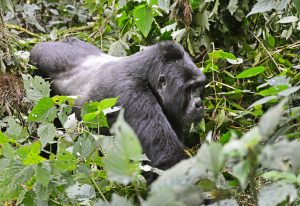Uganda’s Long Path to Becoming East Africa’s Leading Tourist Destination
November 24, 2024

Uganda, famously dubbed the Pearl of Africa, possesses all the elements required to dominate East Africa’s tourism sector. The country is a treasure store of natural and cultural wonders, from its unique mountain gorillas to the world’s most powerful waterfalls.
However, despite a steady post-COVID recovery and notable achievements, Uganda lags behind regional competitors like Kenya and Tanzania in realizing its tourism potential.
Uganda must address systemic challenges to top East Africa’s tourism rankings while strategically leveraging its unique offerings.
The sector has demonstrated resilience, with revenue rising from UGX 110 billion in 2017/18 to UGX 156.5 billion in 2023/24. Employment has surged to 610,806, and visitor numbers to national parks and the Uganda Wildlife Education Center (UWEC) are rising. However, foreign exchange earnings of $1.025 billion in FY 2023/24 remain significantly below the $1.6 billion recorded pre-pandemic in 2019/20.
While infrastructure upgrades like improved tourism roads and the near-complete Entebbe Airport expansion have spurred growth, critical gaps in funding, inadequate marketing, and climate-related challenges continue to hold Uganda back.
Herbert Byaruhanga, a seasoned tourism consultant, asserts that Uganda must rethink its strategy to achieve regional leadership. “We need to learn from the tourism sectors of other economies, leverage our unique attractions, and position ours as a premier destination. Only then can we attract the numbers and investment required to grow the sector,” he says.
Learning from Regional Competitors

Gorilla family
Kenya has established itself as the safari hub of Africa, While Tanzania’s seamless integration of beach and wildlife tourism has drawn significant international attention. Both countries benefit from robust marketing campaigns, efficient infrastructure, and extensive airline connectivity
In contrast, Uganda is yet to fully capitalize on its unique selling points. While gorilla trekking in Bwindi and Mgahinga offers an unparalleled experience, these attractions need more aggressive promotion. Moreover, Uganda’s equatorial climate, rich biodiversity, and cultural heritage remain underutilized in global campaigns.
Uganda must redefine its narrative. Campaigns like “Explore Uganda” and “Tulambule” are promising but need global amplification. Collaborations with international influencers targeted digital marketing and robust participation in global expos can reposition Uganda as a must-visit destination. Additionally, offering cross-border tourism packages with EAC partners can widen its appeal.
While some progress has been made, much more is needed. Fast-tracking aerodrome upgrades in Kasese, Gulu, Kidepo, and Arua, as well as improving road access to remote attractions, will enhance tourist mobility. Expanding marine transport and finalizing the Kabalega Airport can further improve connectivity.
Uganda should expand beyond wildlife tourism. Developing cultural heritage sites, promoting adventure activities like white-water rafting and mountain climbing, and supporting eco-tourism initiatives can attract niche markets. Byaruhanga highlights that improving key tourism products is essential to fostering sector growth.
Promoting Domestic Tourism
A thriving domestic market can shield the sector from global economic shocks. Expanding affordable packages under the “Tulambule” initiative and incentivizing local travel will create a reliable tourism base. Uganda must scale up efforts to combat poaching, mitigate climate change impacts, and promote sustainable practices.
Eco-tourism initiatives and partnerships with global conservation organizations can enhance funding and protect the country’s natural assets.
The government needs to prioritize tourism in its budget, ensuring critical projects receive adequate funding.
Partnerships with airlines like KLM, Emirates, and Uganda Airlines must be strengthened to enhance accessibility and promote Uganda in international markets.
Efforts to train 1,100 Ugandans in tourism-related apprenticeships are commendable. However, capacity-building initiatives must be scaled up to ensure a globally competitive workforce in all facets of the tourism value chain.
The Road to Leadership
Uganda has the resources, attractions, and ambition to lead East Africa’s tourism sector. However, achieving this goal requires bold investments, innovative marketing, and a coordinated effort among government, private stakeholders, and local communities.
Byaruhanga aptly sums up the challenge: “Tourism is a competitive industry. For Uganda to stand out, we must learn from others, improve our products, and tell our story in a way that captures the world’s imagination.”
The journey to regional dominance will not be easy, but with a unified vision and strategic execution, Uganda can claim its place as East Africa’s premier tourist destination.
Related Articles
August 30, 2025
Ateker Cultural Museum
Ateker Cultural Museum is located in Moroto and seeks to preserve the Ateker Culture by way of collecting, preserving, conserving,
Read Article
July 04, 2024
Kampala things to do | Kampala top things to do | Visit Kampala City
Kampala, the capital city of Uganda, offers a diverse range of activities and attractions. The City of Kampala offers a
Read Article
May 27, 2023
Mpanga Central Forest Reserve Birding Tour
MPANGA CENTRAL FOREST RESERVE The Mpanga Central Forest Reserve lies 37 kilometres southwest of Kampala City in Uganda’s Mpigi district,

Leave a Reply